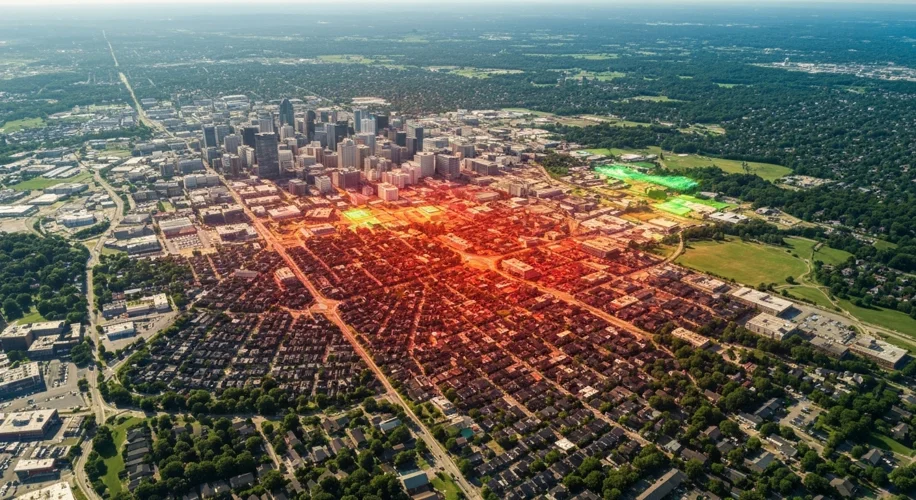Did you know that the concrete and asphalt in our cities absorb and retain more heat than natural landscapes? This phenomenon is known as the Urban Heat Island (UHI) effect, and it’s making our cities significantly hotter than surrounding rural areas. As someone who studies climate science, I’ve seen firsthand how this impacts communities, especially in cities like my home, Atlanta.
What Exactly is an Urban Heat Island?
Imagine a city as a giant heat sponge. Buildings, roads, and other infrastructure absorb solar radiation during the day and then slowly release it at night. This, combined with waste heat from vehicles, air conditioning, and industrial processes, creates a pocket of warmer temperatures. While this might sound like a minor inconvenience, the UHI effect has serious implications.
The Science Behind the Heat
Several factors contribute to the UHI effect:
- Surface Properties: Dark surfaces like asphalt and dark roofs absorb more sunlight than lighter surfaces. They have low albedo (reflectivity).
- Geometry: Tall buildings create urban canyons that trap heat and reduce air circulation.
- Reduced Vegetation: Cities often have less green space, and trees provide shade and cooling through evapotranspiration (water released from plants into the atmosphere).
- Anthropogenic Heat: Heat generated by human activities – like cars, factories, and air conditioners – adds to the ambient temperature.
Atlanta’s Experience
Here in Atlanta, we see this play out every summer. On a hot day, the difference in temperature between downtown Atlanta and its outer suburbs can be several degrees Fahrenheit. This isn’t just about comfort; it has real consequences for our health and well-being.
The Unequal Impact
What’s particularly concerning is that the UHI effect disproportionately affects marginalized communities. Many of these communities, often historically redlined, are located in areas with less green space, more impervious surfaces, and older, less efficient housing stock. This means residents in these neighborhoods are exposed to higher temperatures for longer periods.
This intensified heat can exacerbate existing health conditions like asthma and cardiovascular disease, increase the risk of heatstroke, and lead to higher energy bills for cooling, which can be a significant burden for lower-income families.
What Can We Do?
Addressing the UHI effect requires a multi-faceted approach:
- Increase Green Infrastructure: Planting more trees, creating green roofs, and expanding parks can provide much-needed shade and cooling.
- Cool Pavements and Roofs: Using lighter-colored materials for roads and roofs can reflect more sunlight and reduce heat absorption.
- Smart Urban Planning: Designing cities with better airflow and incorporating more green spaces into new developments.
It’s about creating healthier, more equitable, and more resilient cities for everyone. By understanding the science behind the Urban Heat Island effect, we can start to implement solutions that make a real difference, especially for those who need it most.

